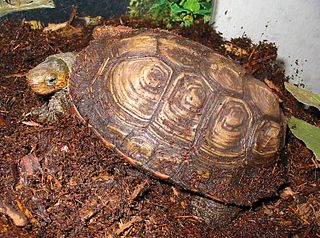
The poinsettia is a commercially important plant species of the diverse spurge family (Euphorbiaceae). Indigenous to Mexico and Central America, the poinsettia was first described by Europeans in 1834. It is particularly well known for its red and green foliage and is widely used in Christmas floral displays. It derives its common English name from Joel Roberts Poinsett, the first United States Minister to Mexico, who is credited with introducing the plant to the US in the 1820s. Poinsettias are shrubs or small trees, with heights of 0.6–4 m (2.0–13.1 ft). Though often stated to be highly toxic, the poinsettia is not dangerous to pets or children. Exposure to the plant, even consumption, most often results in no effect, though it can cause nausea, vomiting, or diarrhea.

Caesalpinia pulcherrima is a species of flowering plant in the pea family Fabaceae, native to the tropics and subtropics of the Americas. It could be native to the West Indies, but its exact origin is unknown due to widespread cultivation. Common names for this species include poinciana, peacock flower, red bird of paradise, Mexican bird of paradise, dwarf poinciana, pride of Barbados, flos pavonis, and flamboyant-de-jardin. The Hawaiian name for this plant is ʻohai aliʻi.
Euryattus is a genus of spiders in the family Salticidae.
Pseudofluda is a genus of South American jumping spiders that was first described by Cândido Firmino de Mello-Leitão in 1928. As of August 2019 it contains only three species, found only in Brazil and Argentina: P. capandegui, P. pergeri, and P. pulcherrima. The name is a combination of the Ancient Greek "pseudo-" (ψευδής), meaning "false", and the salticid genus name Fluda.
Thianella is a possible monotypic genus of jumping spiders containing the single species, Thianella disjuncta. It was first described by Embrik Strand in 1907, and is found only on Java. Based on a male specimen, Roewer placed it close to Thiania, but his placements of salticids have often been questionable and no drawings currently exist. The name is an alteration of the salticid genus Thiania, and the species name is from Latin disiunctus "separated". The World Spider Catalog regards the genus and species names as nomina dubia.

Thiania is a genus of jumping spiders that was first described by Carl Ludwig Koch in 1846.
Thianitara is a genus of Southeast Asian jumping spiders that was first described by Eugène Louis Simon in 1903. As of August 2019 it contains only two species, found in Thailand, Indonesia, and Malaysia: T. spectrum and T. thailandica. It was briefly considered a junior synonym of Thiania until 2017, when it was revived by Jerzy Prószyński.

Thwaitesia is a genus of comb-footed spiders that was first described by Octavius Pickard-Cambridge in 1881.

Thiania bhamoensis is a species of jumping spider.

Spider fighting or spider derby is a blood sport involving spiders that occurs in different forms in several areas of the world. Among them are the Philippines, Japan, and Singapore. The fights that occur in the Philippines and in Japan are staged between females of various species of web weavers. Female spiders will kill a rival if the loser does not quickly flee or receive the aid of a human handler. The contests that are staged in Singapore are fights between male jumping spiders. The males fight only for dominance, and ordinarily the loser will flee, though sometimes they will lose a leg in the fight.

The emerald green snail, green tree snail, or Manus green tree snail, scientific name Papustyla pulcherrima, sometimes listed as Papuina pulcherrima, is a species of large, air-breathing tree snail, a terrestrial pulmonate gastropod mollusk in the family Camaenidae.
Ipomoea pulcherrima is a species of plant in the family Convolvulaceae. It is endemic to Peru.

Euophryini is a tribe of jumping spiders. It has also been treated as the subfamily Euophryinae.

The ornate or painted wood turtle is one of nine turtle species of the genus Rhinoclemmys of the family Geoemydidae. There are four recognized subspecies.

Chintamoni Kar Bird Sanctuary (CKBS) situated at south Kolkata and near Narendrapur Ramkrishna Mission. This is also known as Kayal-r Bagan. This garden is famous for availability of wide variety of birds, butterflies, ferns and orchids.
Laetesia is a genus of dwarf spiders that was first described by Eugène Louis Simon in 1908.
Laetesia pulcherrima is a species of sheet weaver spider found in New Zealand. It was described by Blest & Vink in 2003.
Meotipa is a genus of comb-footed spiders that was first described by Eugène Louis Simon in 1895.

Meotipa pulcherrima is a species of cobweb spider in the family Theridiidae. It is found in Tropical Africa, and has been introduced into the Americas, Papua New Guinea, China, Korea, Japan, and the Pacific Islands.









